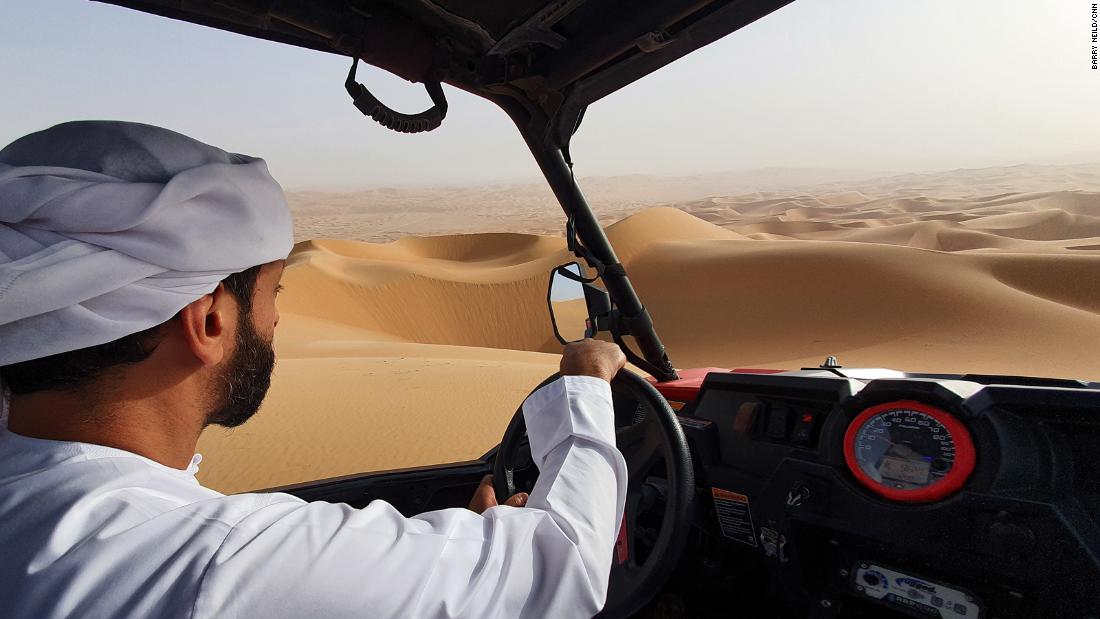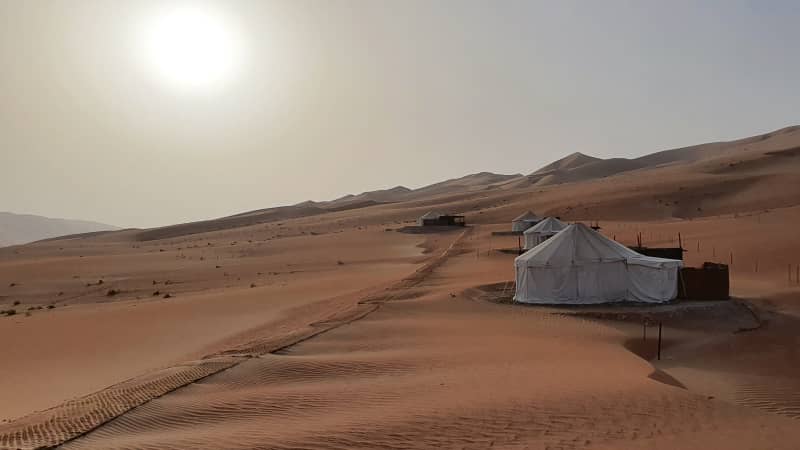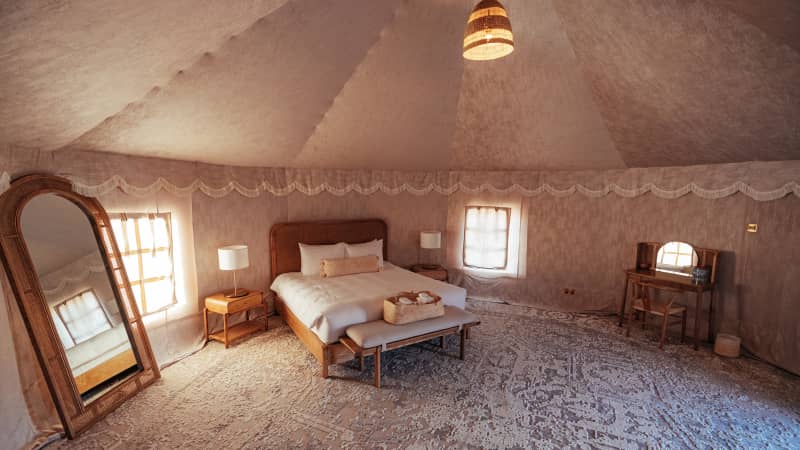Liwa Desert, Abu Dhabi (CNN) — When Salam Almazrouei was a boy, he and his friends would play a game out in the desert that most people would find terrifying.
In the dead of night, despite being too young to drive in most countries, they would take cars out into the huge sea of sand dunes stretching from Abu Dhabi to Saudi Arabia, then turn the headlights off.
With only the moon to light the way, they would then race to see who could make it home in the fastest time.
It was clearly a game fraught with peril. Take a wrong turn, break down or get stuck in soft sand and you’d be on your own, miles from civilization, left to the mercy of a rising desert sun that could bring oven-like temperatures during the day.
“But we never got lost,” he says.
For Almazrouei, these seemingly identical dunes, stretching as far as the eye can see, are as familiar as streets are to a city dweller. Although occasional high winds can blow the sands around, the terrain, he says, never loses its familiarity.
This corner of Liwa Desert, also known as Rub’ al Khali or the Empty Quarter, has been home to Almazrouei’s Bedouin family for generations. Although they’ve now set up homes and businesses in Abu Dhabi’s towns and cities, the desert remains in their hearts and they return regularly.
And now the 46-year-old wants to share it. Inspired by his own extensive travels as a student and engineer, he’s tried to brainstorm ways to help people from beyond the UAE engage with and enjoy the magic of Liwa.
“At first, I came up with the idea of setting up a camp in the US, in California, complete with 70 Arabian camels,” he says. “But they didn’t allow it because of concerns over foot and mouth disease. And so we then said, ‘let’s set it up here.'”
Swallowed by sand
“Here” is a spot of almost otherworldly beauty. A smooth blanket of sand that gently ruffles out as far as the eye can see. At night, it basks under inky skies alive with stars. During the day, bright sunlight and blue skies.
It’s truly the middle of nowhere. It’s a two-hour drive south and west from downtown Abu Dhabi, through the small city of Zayed and then another hour south until the road reaches almost its last mile before it’s swallowed by sand.
On the outside, the tents’ white, sandstorm-battered exteriors look functional. Inside, they offer pure glamping luxury.
Ripping back the Velcro-sealed doorway reveals an aircon-cooled interior, lined with plush drapes, carpeted by a traditional rug and lit from above by an elegant lamp dangling from the tent’s lofty ceiling.
There’s a large, comfortable double bed made up with fine cotton sheets, a dresser, a wardrobe, a full-length mirror and a coffee table and chairs. A side curtain parts to reveal a proper bathroom, complete with flushing toilet and a shower kitted out with posh soaps.
If you can pull yourself away from contemplating the vast emptiness and adjust to the muffled silence of being so far from civilization, a good night’s sleep is a strong possibility.
“I don’t consider it as a hotel, but an experience,” says Almazrouei. “When you get to your room, you will be amazed that everything has been designed by us. When you are in your tent you are in luxury, but step outside and you’re in the desert.”
For food and entertainment,Almazrouei has built a more permanent structure nearby. Designed to look like a traditional Middle Eastern house from the 1800s, using imported African wood, it has a dining room, bar, indoor and outdoor seating and a souvenir shop.
On warm nights, illuminated by fairy lights or a flickering campfire fanned by refreshing breezes, it’s the perfect place to gather for a cool drink to hear tales of the desert. In the daytime, it’s the meeting place for activities including camel treks, falconry or dune bashing 4×4 drives.
The best time to visit is during cooler months from October to March. The place stays shut during summer when it’s too hot. The temperatures only relent, it’s said, in late August when a bright star called Sulhail appears over the southern horizon.
Roller coaster ride
If Almazrouei is behind the wheel for a Liwa dune bashing excursion, be prepared for a roller coaster ride. Using skills honed during his moonlit desert races, he’s a laid-back daredevil, plunging his dune buggy down near-vertical descents, or tilting it sideways along ridges, nearly to tipping point.
He navigates by the color of the sand, the vegetation and the shape of the terrain, making a beeline for Moreeb Dune, a colossal slope of sand that towers above a flat plain. Crowds gather here once a year for the days-long Liwa Festival, which includes 4×4 races up the dune. This year’s event is scheduled from November 22 to December 4.
On the way back, Almazrouei parks the buggy on a dune above the Liwa Nights camp. Here, poking out of the sand, is one of several giant bladders which are regularly filled with water to supply the tents. It’s trucked in as locally sourced H2O is way too salty.
This is one of the few signs of human impact on the surrounding scenery, which Almazrouei is eager to preserve. Before building the camp, he says he hired 60 people to work for two weeks to remove piles of trash left on the site by people camping for previous Liwa festivals.
He’s currently installing ranks of solar panels with the aim of making it 100% reliant on sustainable energy. And, he says, he’s installed more than 700 palm trees in the past year as part of an ongoing planting program to add shade and encourage wildlife in the area.
And while government officials who collaborated with him setting up the camp were, he says, encouraging him to add 10 or 20 tents to the 10 he currently rents out for about US$750 a night, he prefers to keep it small — evidently not in it to make serious money.
“We want to make it authentic and romantic and keep it as a place to come and switch off for a few days,” he says.
Amy Zhao, a US-based engineer recently on assignment in Abu Dhabi, is among those who have sampled Almazrouei’s hospitality at Liwa Nights — and enjoyed a slightly less relaxing ride in his dune buggy.
“I really like it,” she says. “It’s an exciting and unique experience. The tents were amazing.”


